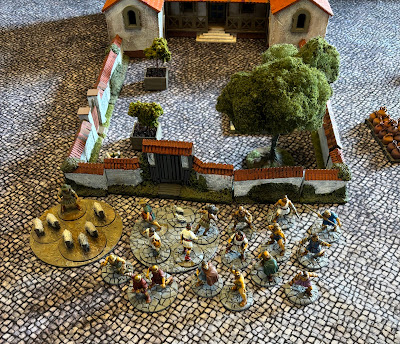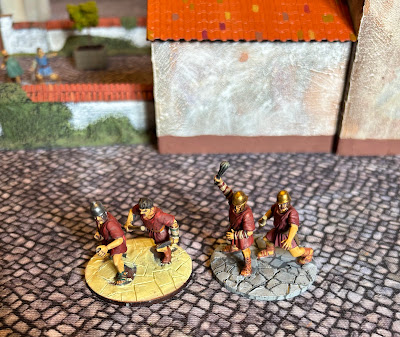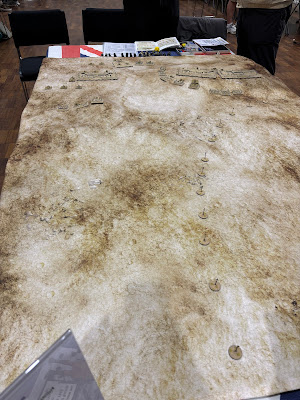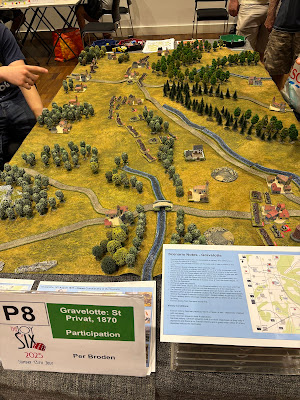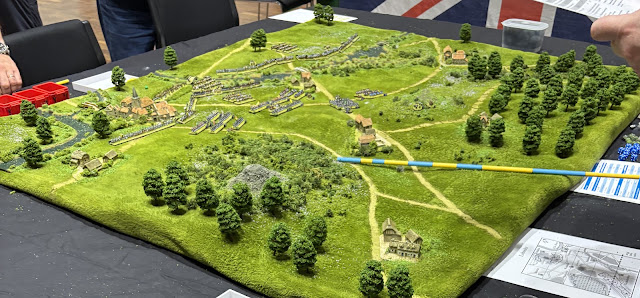So Joy of Six is behind us for another year and I have to say I enjoyed it despite Sheffield Hallam University being on sauna setting for the day.
The Cold War Commanders Operation Vijay game was a success, I think, with Andy T and Neil M actually running/playing the game and me chatting to punters. Considering that the detailed scenario and the table set up were pretty much improvised on the day, it all worked out very nicely.
 |
| I think the Geek Villain mat worked well |
 |
An Indian Canberra flies over the victorious
Indian infantry |
Other games included a marvellous Nomad assault on Pavis using the Midgard rules put on by author James Morris and pals:
The MaDGamers of Maidenhead and District did a recreation of Alam Halfa, 1942 using the Rapid Fire Reloaded rules. Interestingly their handout says that they used both Baccus 6mm and Heroics & Ros miniatures in the same game. I can only assume this refers to men rather than vehicles as otherwise the scale differences would have been too noticeable.
Again the printed cloth worked well and the game certainly gave the impression of mostly empty desert.
Adjacent to our table were the Ilkley Irregulars, who put on Waterloo using Bloody Big Battles, something that I myself would like to do one day. In fact I bought a copy of the scenario book from them!
It wasn't the prettiest game at the event but the participants were clearly having a great time. I believe Napoleon was successful this time.
Given the very zoomed-out scale it's not so easy to produce lovely-looking terrain for a Bloody Big Battles game but the COGS group from Chesterfield achieved it with their Mons 1914 set up.
And finally among the Bloody Big Battles offerings was Per Broden's Gravelotte/St Privat, 1870.
This was lovely despite ParcelForce losing Per's dedicated game mat and his having to rebuild the battlefield using a borrowed one!
Another very attractive game was the Siege of Bastogne by James Mitchell and Brendan Dolan.
It's far from obvious but the table is actually organised on a square grid to support the rules in use, Eisenhower by Sam Mustafa. Very subtly done!
Total Battle Miniatures put on a small but beautifully formed representation of the 18th century Battle of Lobositz.
I thought the river was particularly nicely done.
Two American Civil War battles were represented. At the smaller scale was the Poe's Field portion of the battle of Chickamauga put on by the Three Shires group.
While the Leeds Wargames Club used Pickett's Charge to portray the Champions Hill battle during the Vicksburg campaign.
There were many other games but I didn't manage a comprehensive photo shoot this time I'm afraid.
I greatly enjoyed the day. Peter Berry tells me numbers were down this year but given that it was one of the hottest days of the year, I'm sure many who might have attended on a whim decided there were better ways to spend their time. Certainly for me a refreshing pint at the nearby Rutland Arms was much needed at the end o the day!
